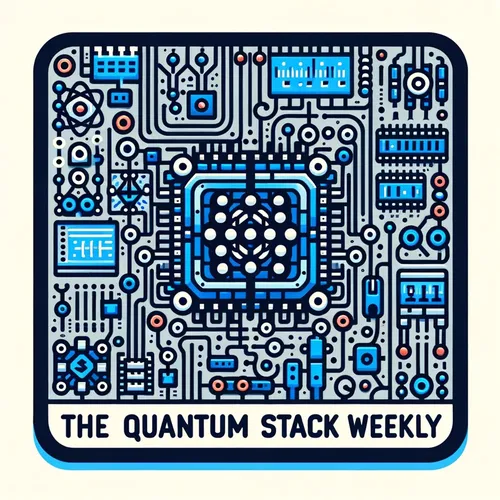Quantum Computing's New Hero: The Neglecton Particle Unlocks Universal Gates
- Author
- Quiet. Please
- Published
- Mon 25 Aug 2025
- Episode Link
- https://www.spreaker.com/episode/quantum-computing-s-new-hero-the-neglecton-particle-unlocks-universal-gates--67507059
This is your The Quantum Stack Weekly podcast.
Stuck in traffic this morning, I found myself contemplating the absurd complexity of modern life—millions of decisions, all interconnected, all vying for resolution. That’s when it hit me: today’s quantum computing breakthrough tackles complexity with the finesse I wish my fellow commuters had. I’m Leo, your host for The Quantum Stack Weekly, and today, we’re diving into a discovery announced just hours ago—one that could finally make topological quantum computing, long considered a moonshot, a tangible reality.
Researchers at USC have resurrected what they once dismissed as “quantum trash”—a particle called the neglecton. Professor Aaron Lauda, leading the charge, likened it to “finding treasure in mathematical garbage.” Their work, just published in Nature Communications, reframes our understanding of anyonic particles. If you’ve followed the elusive quest for a universal quantum computer, you know topological approaches have always stumbled at the final hurdle: their favored qubits, Ising anyons, simply can’t perform every logic operation needed. But add a single stationary neglecton, and suddenly the whole system can do all the logic gates, using braiding alone. Just one new character on the quantum stage—and the story changes fundamentally.
Let me paint the scene. Imagine a quantum laboratory—fluorescent light casting an antiseptic glow, supercooled wires winding into dilution refrigerators, the ever-present hum as control electronics coax particles to dance. Here, quantum physicists manipulate systems smaller than a virus, weaving anyons’ worldlines in circuits far removed from our three-dimensional reality. In topological quantum computing, we depend on the entangled choreography of these particles. Their “braids”—like elaborate knots in a cosmic loom—encode information fault-tolerantly, making them robust against the environment’s chaos. It’s the equivalent of whispering a secret across a stadium and being sure it won’t get garbled.
USC’s breakthrough is especially dramatic because it was hiding in plain sight. Physicists had discarded the neglecton due to mathematical quirks, thinking it unusable. But by embracing the awkwardness—building computation in “stable rooms” of the theory, away from trouble spots—Lauda’s team circumvented unitarity issues and created a robust encoding scheme. It’s as if we found a new, unbreakable fiber hiding inside what we thought was scrap thread, transforming the weaving of quantum logic.
What does this mean for the real world? Topological quantum computers promise unprecedented resilience; errors simply “fall off,” making them more likely to scale. With potential applications ranging from simulating complex molecules to cracking cryptography, the prospect of universal quantum gates—finally achieved, thanks to that neglecton—moves us closer to hardware that can stand up to the world outside pristine labs.
The lesson? Sometimes, our most profound solutions come from what we overlook. Much like a city whose hidden side streets smooth the traffic jams of daily life, quantum computing’s path forward might depend on embracing its oddest detours.
Thanks for listening to The Quantum Stack Weekly. I’m Leo—Learning Enhanced Operator. If you have questions or want a topic discussed, email me at [email protected]. Subscribe for weekly insights, and remember, this is a Quiet Please Production. For more, visit QuietPlease dot AI. See you next week—where the only constant is superposition.
For more http://www.quietplease.ai
Get the best deals https://amzn.to/3ODvOta
